China is the largest country in the world by population and the fourth largest country by physical size. The landscape in China varies, with deserts, mountains, highlands, subtropical forests, plateaus, grasslands, and rivers. In fact, China is home to some of the largest rivers in the world. Let’s take a look at the 12 largest rivers in China. As we explore these rivers, we will be measuring their size based on length, rather than depth or discharge amounts.
12. Argun River – 1,010 Miles (1,620 km)
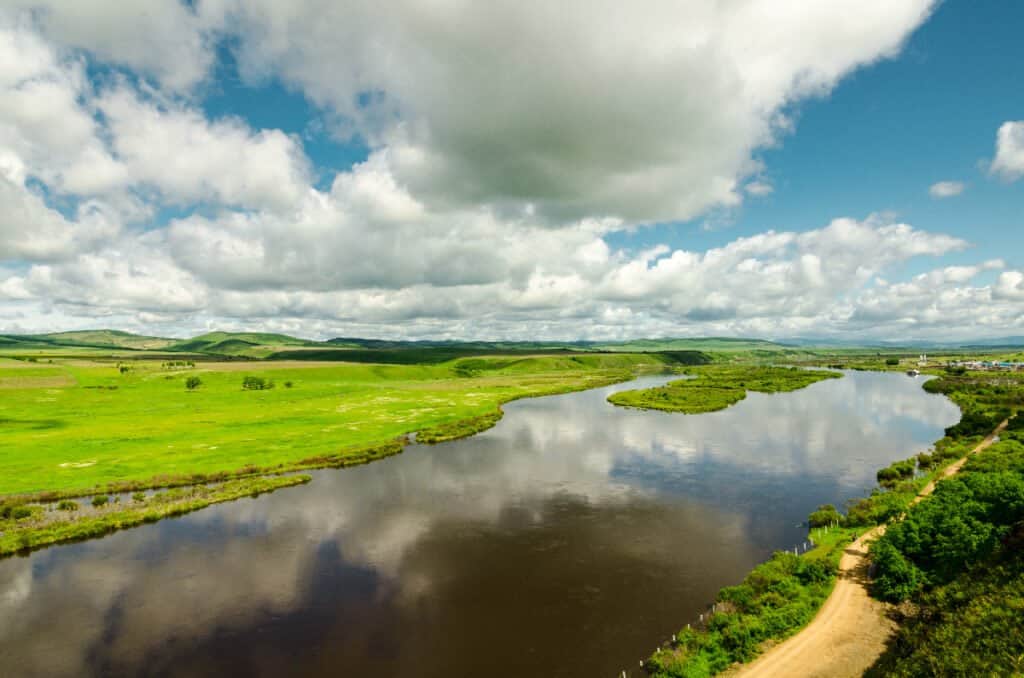
The Argun River has been a boundary between Russia and China since 1689
©iStock.com/Yuanping
The Argun River is the twelfth longest river in China. It is 1,010 miles long, flowing through China and Russia. Along its journey, the Argun River forms the border between China and Russia for about 600 miles. The Argun River eventually merges with the Shilka River to form the Amur River.
11. Xi River – 1,216 Miles (1,957 km)
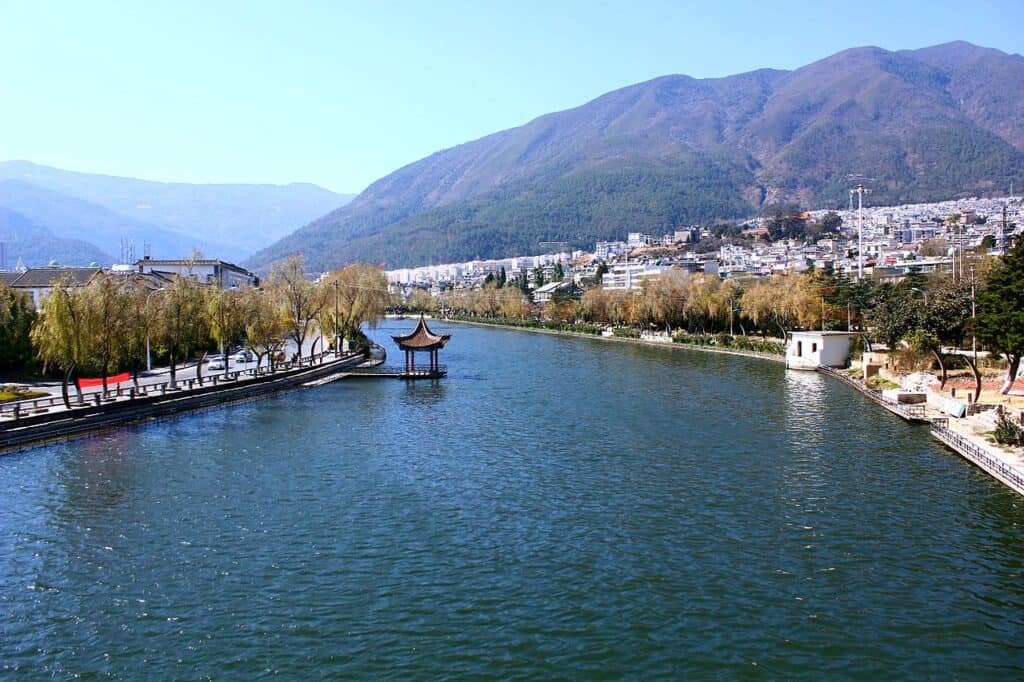
The Xi River plays a vital role in the storage and transport of carbon in Southern China
The Xi River is the eleventh longest river in China. The river flows for 1,216 miles from the highlands of the Yunnan Province to the South China Sea. Along its journey, the river cuts a deep valley through mountainous landscapes of limestone. The limestone rock is filled with tunnels, openings, and sinkholes. Much of the river’s drainage runs underground.
10. Tarim River – 1,305 Miles (2100 km)
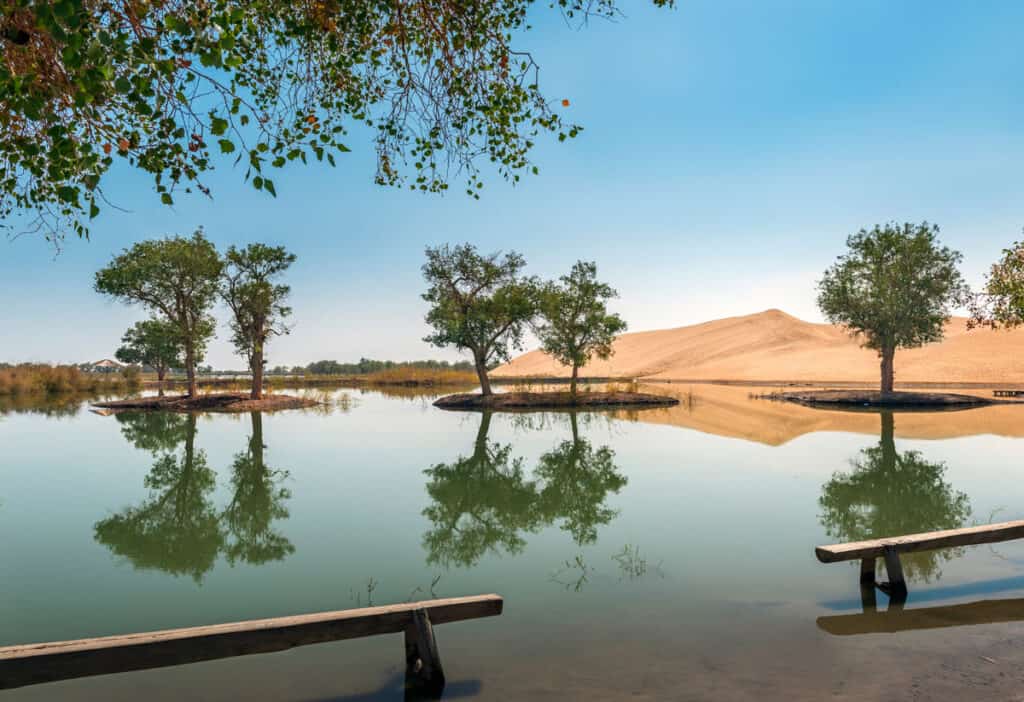
The Tarim River flows through the Takla Makan Desert in China
©wxj651208/Shutterstock.com
The Tarim River is 1,305 miles long and is the tenth longest river in China. It is also the longest inland river in China. It starts in the Karakoram and Kunlun Mountains and flows through the Takla Makan Desert. There is very little rain in this region. The water in the Tarim River comes completely from its tributaries in the mountains. There is also a lot of sediment in the water. The Tarim River’s name means “water in the desert.”
9. Pearl River – 1,500 Miles (2,400 km)

The Pearl River is famous for flowing through the city of Guangzhou
©iStock.com/StefanoZaccaria
The Pearl River is the largest river in South China. It is the second-largest river in China based on volume (following the Yangtze River). The banks of the Pearl River are filled with many historical sites and beautiful scenery. It is an excellent location for day cruises and night cruises.
8. Indus River– 2,000 Miles (3,200 km)
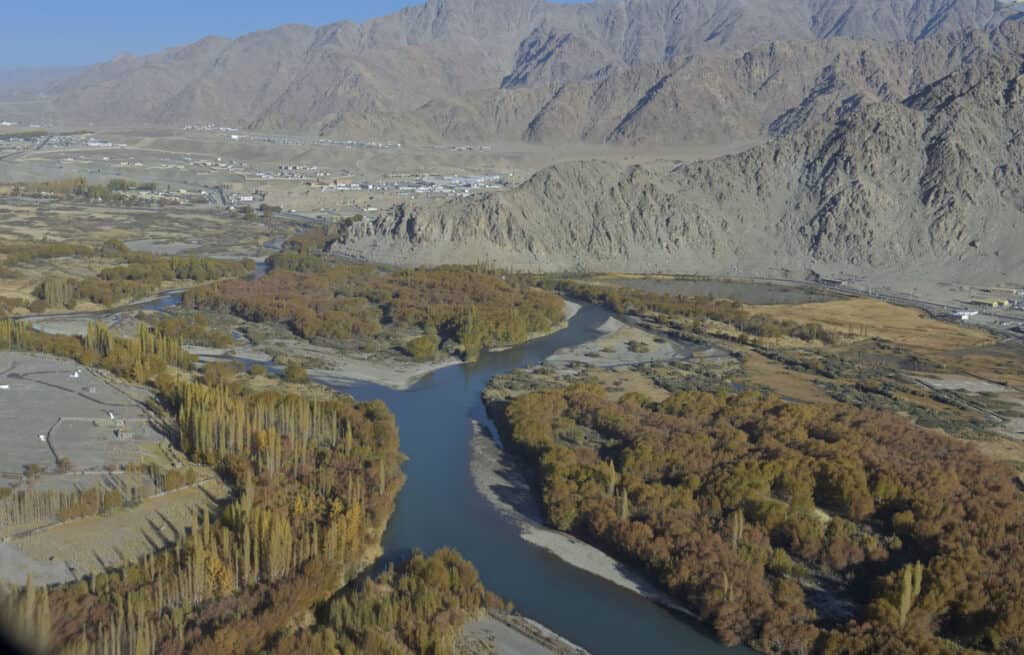
The Indus River is the longest river in Pakistan
©iStock.com/Naresh Sharma
The Indus River is the ninth longest river in China. It begins in the Kailash Mountains in the Tibetan Plateau. The river flows for 2,000 miles through China, Kashmir, and Pakistan, and drains into the Arabian Sea.
7. Salween River – 2,044 Miles (3,289 km)
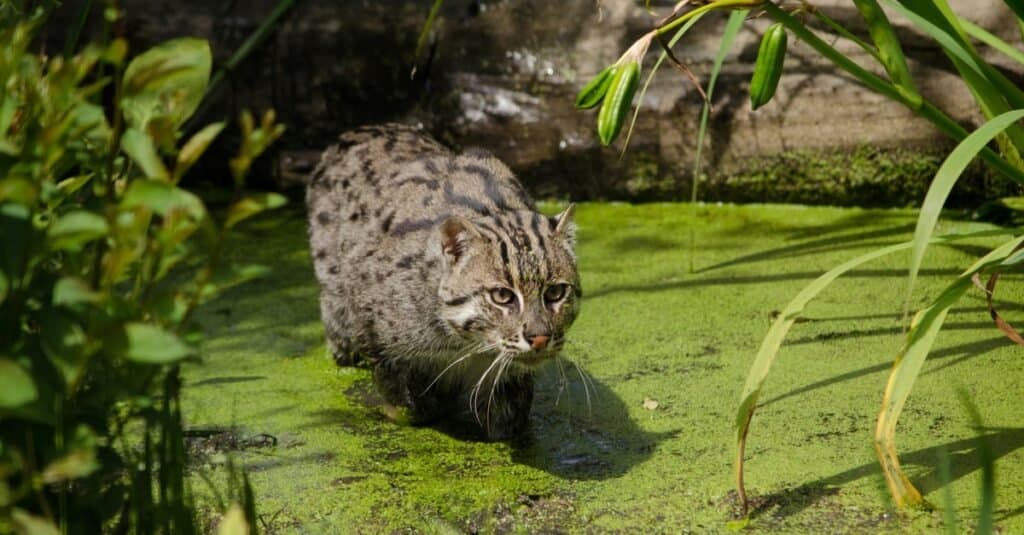
The Salween River basin is home to the fishing cat. The fishing cat is a strong, skilled swimmer.
©Gemma Simpson/Shutterstock.com
The Salween River is 2,044 miles long, making it the eighth-largest river in China. The Salween River flows through China, Myanmar, and along the border of Thailand until it flows out into the Andaman Sea. The portion that runs through China is called the Nujiang River, which means “angry river.” During heavy summer rainfalls, the river can be heard for miles away.
The Salween River basin is one of the most ecologically diverse regions in the world. Nearly half of all the animal species in China can be found in the upper Salween River basin. Here are just some of the different animals that live here:
- 151 species of fish
- 92 species of amphibians
- The greatest diversity of turtles in any river in the world
- Indochinese tigers, fishing cats, and clouded leopards
- Sun bears and Asiatic black bears
- Asian small-clawed otters and Sunda pangolins
- Eastern Hoolock gibbons
- Siamese crocodiles
Many of endangered species live in the Salween River basin, including:
- Snow leopards
- Slender-billed vultures
- White-rumped vultures
- Black snub-nosed monkeys
6. Brahmaputra River – 2,466 Miles (3,969 km)

The Brahmaputra River’s name means “son of Brahma” in Sanskrit
©Meiqianbao/Shutterstock.com
The Brahmaputra River is the fifth longest river in China. It begins on the northern side of the Himalaya Mountains in the Burang County of Tibet. The river flows through Tibet, China, India, and Bangladesh. In Tibet it is known as the Yarlung Tsangopo River.
The Brahmaputra River is one of the few rivers in the world that exhibits a tidal bore. A tidal bore is when the leading edge of a strong incoming tide forms a wave that pushes upriver and reverses the direction of the river’s natural current.
The Brahmaputra River is home to many fish like pabda, mrigal, and chital. The lower portions of the river are surrounded by swamps. There are many forests along the riverbank, providing a habitat for elephants, leopards, Indian rhinoceroses, deer, and Bengal tigers.
5. Irtysh River – 2,640 Miles (4,248 km)

The Irtysh River is important for water supply, irrigation, and navigation
©kikiwis / Creative Commons – License
The Irtysh River is the seventh-largest river in China. This river is 2,640 miles long, flowing through Mongolia, China, Kazakhstan, and Russia where it joins the Ob River. Together, the Irtysh and Ob Rivers are 3,360 miles long, forming the seventh-longest river system in the world. The Irtysh River is important for transportation, water supply, and irrigation. There are several high-capacity hydroelectric power stations along the river.
4. Mekong River – 2,700 Miles (4,350 km)
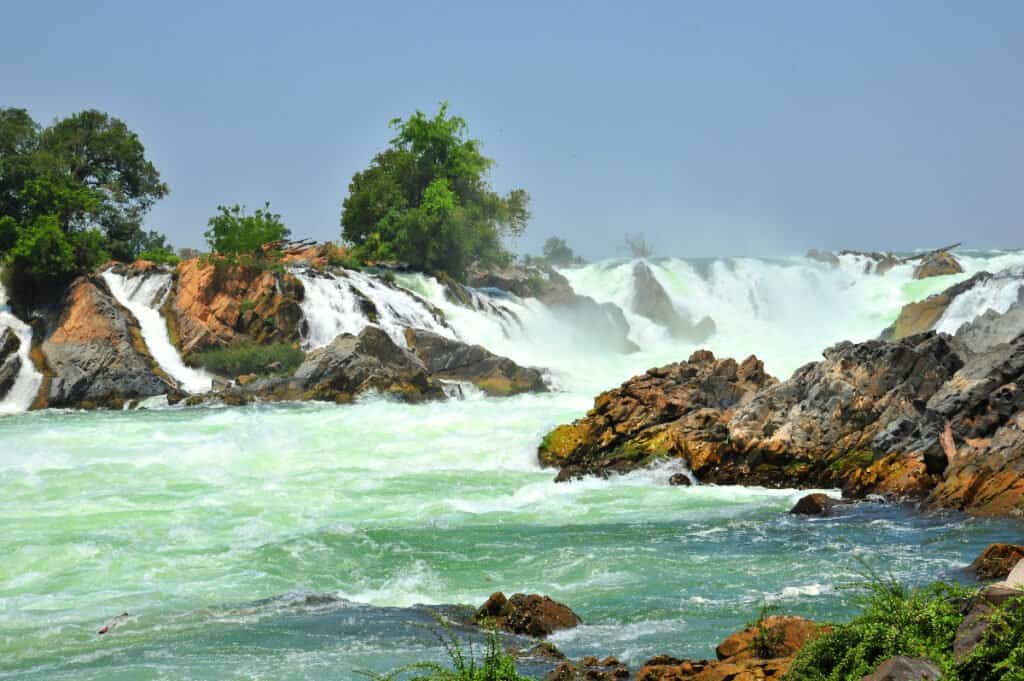
Khone Phapheng Falls are located on the Mekong River
©Kritsana.p/Shutterstock.com
The Mekong River is the sixth-longest river in China with 2,700 miles flowing through China, Myanmar, Laos, Thailand, Cambodia, and Vietnam. Upstream, it is called the “Lancang River,” which means “turbulent green river.” The Mekong River is filled with rapids and waterfalls. The river’s flow experiences extreme changes with the seasons, making it difficult to navigate. However, the Mekong River is still a major route between western China and southeastern Asia.
The Mekong River basin is one of the richest areas of biodiversity in the world, second only to the Amazon basin. Here is a list of just some of the wildlife that lives here:
- 20,000 plant species
- 430 mammals
- 1,200 birds
- 800 reptiles and amphibians
- 850 freshwater species
- 1,100 species of fish
The Mekong River is a river of giants. There are more species of large fish living in the Mekong River than in any other river. For example, probarbus barbs can grow up to 5 feet long and weigh 150 lbs. The giant stingray is 16 feet long and 6 feet wide. The Mekong giant catfish is endemic and only lives in the Mekong River. This fish is 10 feet long and weighs up to 660 lbs!
The endangered Irrawaddy dolphin lives in the lower portions of the Mekong River. It was once very common here, but now there are only about 92 remaining. The Irrawaddy dolphin is a sacred animal to the Khmer and Lao people.
3. Amur River – 2,760 Miles (4,440 km)

The Amur River is home to kaluga, a large predatory sturgeon.
©Tatiana Belova/Shutterstock.com
The Amur or Heilong Jiang River is the third-largest river in China. By some measurements, it is also the tenth-largest river in the world. The Amur River flows through Russia, Mongolia, and China. Along its course, the river forms much of the Russian-Chinese border. The Amur River’s modern Chinese name, Heilong Jiang, means “black dragon river.”
The Amur River contains at least 123 species of fish. Several of these fish are endemic and only found in this river, like the Kaluga and Amur sturgeon. The Kaluga is the largest species in the Amur River. It can grow up to 18 feet long. There are also many predatory fish here, like Amur pike, Amur catfish, northern snakehead, taimen, and yellowcheek.
2. Yellow River – 3,395 Miles (5464 km)

The Yellow River is a very long river that drains into the Bohai Sea
©cnyy/Shutterstock.com
The Yellow River is the second-longest river in China, measuring 3,395 miles long. The river begins in the Western Qinghai Province and flows into the Bahai Sea. The Yellow River is sometimes called the “Mother of China” because the river basin was the birthplace of ancient Chinese civilizations. The river gets its name from the large amounts of sediment it carries, making the water a yellow color.
The Yellow River supports habitats for many wildlife species. 160 species of fish live within the river’s water. Many fish are critically endangered because of human activities like overfishing, pollution, dams, and land reclamation. The Yangtze sturgeon and the Chinese sturgeon are two of these endangered fish species.
Many mammals live in and around the Yellow River, like water deer, Père David’s deer, and Eurasian otters. There are 160 species of amphibians in the Yellow River Basin and many species of turtles. The Chinese softshell turtle and the Chinese pond turtle are both native to the Yellow River basin. Much of the wildlife here is considered threatened due to the commercial use of the river.
1. Yangtze River -3,917 Miles
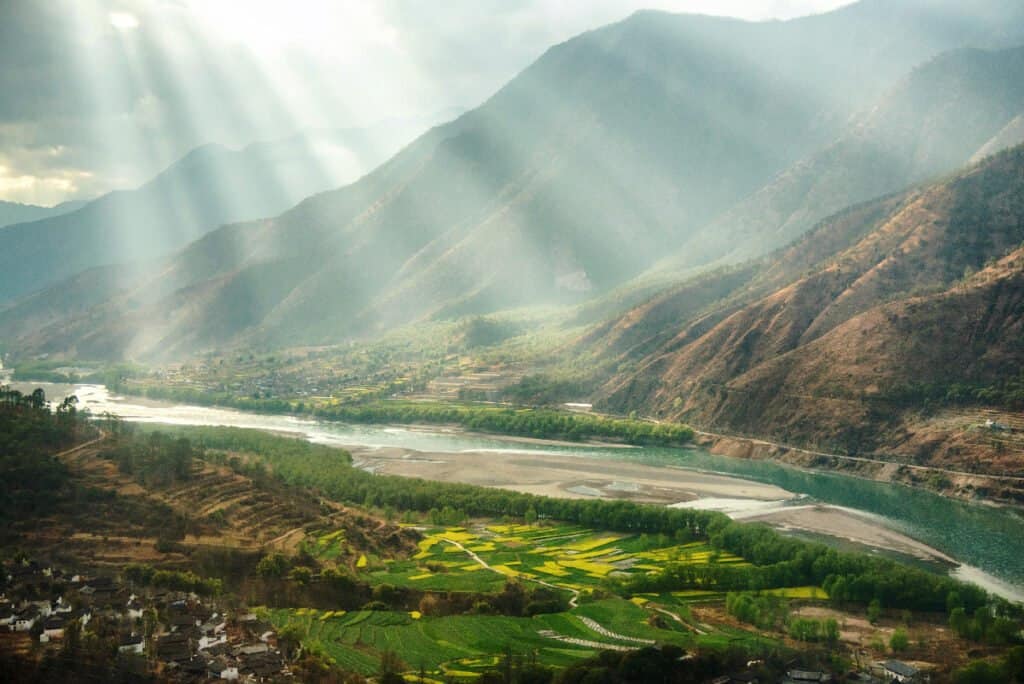
The Yangtze River is the longest river in Asia
©iStock.com/martinhosmart
The Yangtze River is the longest river in China, flowing across the country for 3,917 miles. This river is also the longest river in Asia and the third-longest river in the world. The Yangtze River begins in the eastern part of the Tibetan Plateau and flows through China into the East China Sea. The river is a major transportation artery for China. It connects many inland cities with the coast and sea. It is one of the busiest waterways in the world.
The Yangtze River is rich in wildlife. 416 species of fish live in the river. 178 of these are endemic and are only found in this river. Some species of snakes also live in or around the river. However, the river also suffers from pollution, siltation, and agricultural runoff. Many of its wetlands and lakes have been lost. Several of the animals in the Yangtze River are now critically endangered. The Chinese alligator, Yangtze sturgeon, and the narrow-ridged finless porpoise are all critically endangered species living in the Yangtze River. The Chinese paddlefish is considered to be the largest fish in the Yangtze River but is now extinct.
Summary Of The 12 Longest Rivers In China
| Rank | River | Length in Miles |
|---|---|---|
| 12 | Argun River | 1,010 Miles |
| 11 | Xi River | 1,216 Miles |
| 10 | Tarim River | 1,305 Miles |
| 9 | Pearl River | 1,500 Miles |
| 8 | Indus River | 2,000 Miles |
| 7 | Salween River | 2,044 Miles |
| 6 | Brahmaputra River | 2,466 Miles |
| 5 | Irtysh River | 2,640 Miles |
| 4 | Mekong River | 2,700 Miles |
| 3 | Amur River | 2,760 Miles |
| 2 | Yellow River | 3,395 Miles |
| 1 | Yangtze River | 3,917 Miles |
The photo featured at the top of this post is © iStock.com/martinhosmart
Thank you for reading! Have some feedback for us? Contact the AZ Animals editorial team.






